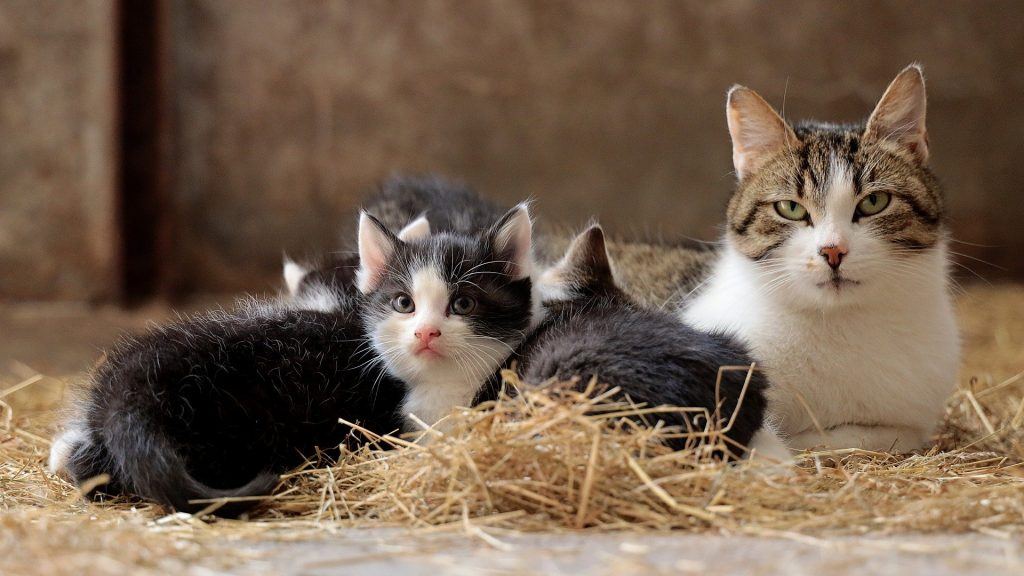Bringing a new cat into your household can be an exciting and rewarding experience, but it’s essential to handle the introduction process carefully to ensure a smooth transition for both your new feline friend and your existing cat. Cats are territorial animals, and sudden introductions can lead to stress and conflicts. In this guide, we’ll walk you through a plan for introducing a new cat to your current one. We have brought home two cats with an existing cat in the house, so have learned what works, sometimes the hard way. When we brought our current younger cat home, we did things very differently from when her older brother came home a few years ago.

1. Prepare a Separate Space
Before bringing the new cat home, set up a separate space for them. This space should include all the essentials: a litter box, food and water bowls, comfortable bedding, toys, and scratching posts. This is crucial to prevent immediate territorial disputes and allow the new cat to acclimate to their new environment.
2. Gradual Scent Exchange
Cats rely heavily on their sense of smell to identify each other. Begin by swapping bedding between your current cat and the new one, allowing them to become familiar with each other’s scents before direct contact. Gradually, introduce items with each cat’s scent to the other’s space, fostering a sense of familiarity and reducing potential anxiety.
3. Controlled Visual Introduction
After a few days of scent exchange, it’s time for a controlled visual introduction. Use a baby gate or a cracked door to allow the cats to see each other without direct physical contact. Observe their body language – signs of curiosity like tail flicks and relaxed postures are positive indicators. However, hissing or growling means it’s too soon to proceed.
4. Mealtime Bonding
Associating positive experiences with each other’s presence can help foster a bond between the cats. Place their food bowls on opposite sides of the closed door during meal times, gradually moving the bowls closer over several days. This positive reinforcement can help them associate each other’s presence with something enjoyable.
5. Supervised Face-to-Face Interaction
Once both cats seem comfortable with each other’s scent and presence, it’s time for a face-to-face meeting. Keep both cats on leashes or in carriers during the initial interaction to prevent direct contact while allowing them to observe and sniff each other. Use treats and gentle praise to create a positive atmosphere.
6. Gradual Interaction
Over the following days, gradually increase the duration of face-to-face interactions. Always supervise these interactions closely. Look for signs of progress, such as relaxed body language and decreased hissing or growling. However, be prepared to separate them if tensions rise.
7. Provide Separate Resources
Cats can be possessive of their resources, so ensure they have separate food and water bowls, litter boxes, and resting spots. This prevents competition and reduces the likelihood of conflicts arising from territorial disputes.
8. Playtime and Positive Reinforcement
Engage both cats in interactive play sessions using toys that encourage group play. This not only provides physical activity but also promotes positive associations with each other’s presence. Reward good behavior with treats and affection to reinforce their growing bond.
9. Patience is Key
Remember that every cat is unique, and the introduction process may take longer for some cats than others. Be patient and observant. If you notice signs of stress or aggression, take a step back in the process and give them more time before progressing.
10. Consult a Professional
If the introduction process becomes overly stressful or if conflicts escalate, consider seeking guidance from a professional animal behaviorist or veterinarian. They can provide personalized advice based on the cats’ specific behaviors and needs.
Introducing a new cat to your existing feline friend requires careful planning, patience, and understanding. Gradual introductions, positive associations, and proper resource management are key to ensuring a harmonious transition. By following these steps, you can pave the way for a strong and peaceful relationship between your cats, creating a loving and enriched environment for all furry members of your family.